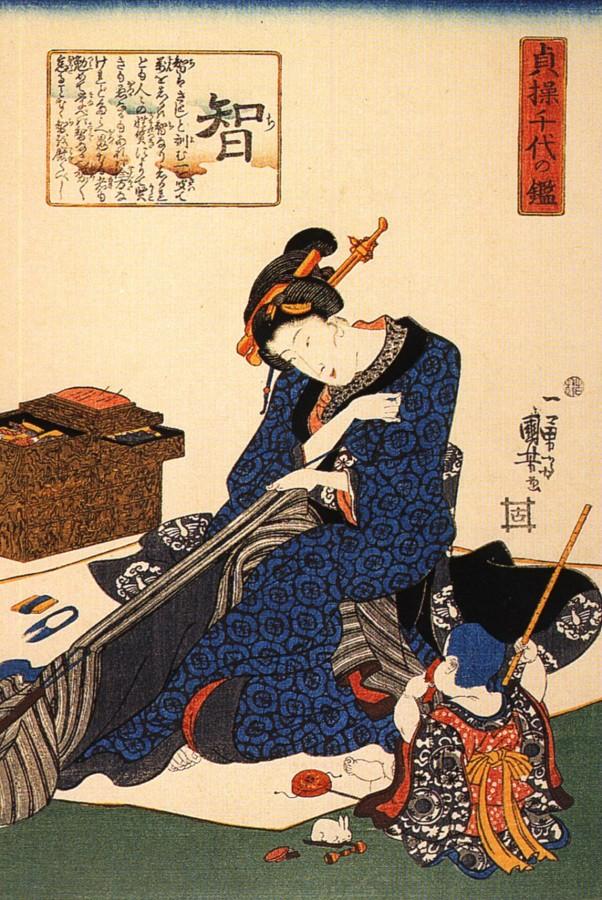Appropriation vs. Appreciation
Sitting in her home, a Japanese woman hand sews a kimono. Kimonos have been a treasured tradition in Japan since the 7th century, but recently have not been honored by companies like Target and Walmart
December 16, 2015
At popular musical festivals like Coachella, you can easily spot popular celebrities wearing bindis, native american headdresses, and chopsticks in their hair. What do all of these outfits have in common? They are all prime examples of cultural appropriation. When one adopts aspects of a culture that are not their own in an insensitive manner, they are participating in the negative phenomenon known as cultural appropriation. Cultural appropriation is notorious among celebrities like Selena Gomez. At the MTV Awards 2013, Selena prompted an outrage for wearing a bindi during her “Come & Get It” performance.
Cultural appropriation is an ambiguous topic. If one’s intentions are to appreciate an aspect of a culture and respect the background behind it, this is cultural exchange. An instance of cultural exchange is American tourists in Japan buying traditional kimonos. This benefits Japan by stimulating the tourism sector of their economy and spreads appreciation for their traditions. When cultural appropriation gets socially unacceptable is when companies like Target sell spin-off “kimonos” for casual wear. This is insulting because traditional kimonos in Japan are worn during special occasions like weddings and a child’s coming of age. It gives off the message that these companies and the customer base are detracting the cultural significance for the sake of fashion.
When asked how she felt about cultural appropriation, junior Pinky Syed said, “People, who are in most cases white, like to pick apart my culture. They choose the parts they like and sell it for their own profit (e.g. urban outfitters selling bindis) and the rest of the culture is garbage to them. Don’t get me wrong, if you’re going to India and buy a sari I see no problem in you wearing it, that’s normal cultural exchange, but when people dress up as a “sexy Indian/Arab princess” by buying a fake ethnic-looking piece of jewelry/costume, it’s very offensive to me.”
Cultural appropriation occurs throughout various cultures. In the native american history, headdresses were reserved for the chief of the tribe. It is told that for every noble act the chief committed, they would earn a feather. Headdresses are symbols of bravery and honor. In spite of this, Victoria’s Secret angel Karlie Kloss sported a mock headdress down the runway, ridiculed by popular news sites such as Huffington Post and The Metropolitan.
Appropriating cultures has become so common that people are not aware they are being insensitive. “I think cultural appropriation is wrong, but people don’t really understand when they are doing it is the worst part,” sophomore Lauren Griesedieck said. No matter who you are, it is safe to be politically correct to refrain from unintentionally insulting a person or an entire culture.











